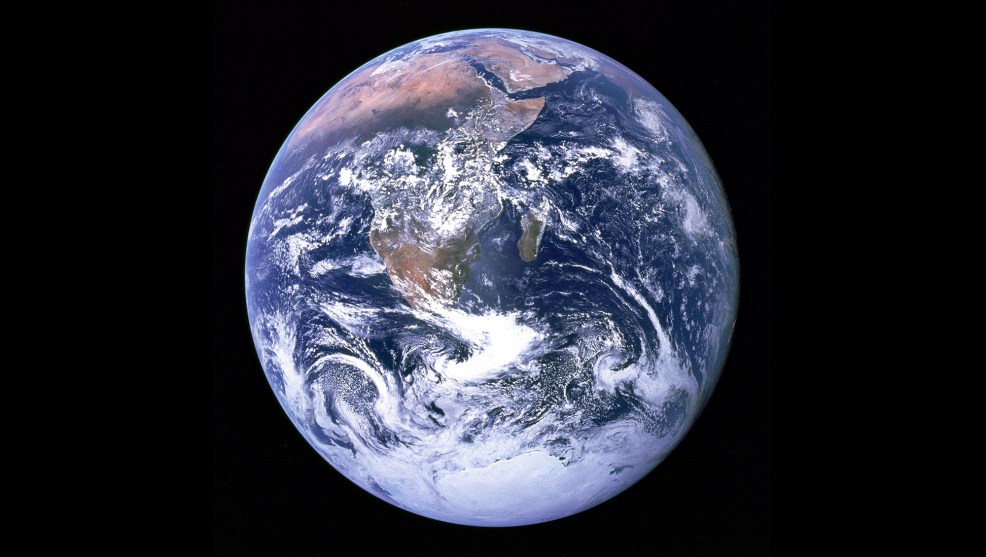
NASA
Here’s my summary of the climate change plans from all of the top-tier Democratic candidates. My assessment is based mostly on three things:
- How practical is the plan? I’m not interested in kitchen sinks. It’s easy to propose a plan that does everything, but if it has no chance of gaining public support then it’s not a serious effort.
- The plan should allocate huge sums for energy R&D. The past two decades have made it clear that the public—and that includes everyone reading this—is not willing to endure huge lifestyle changes in order to save us from planetary suicide. The only way we’re likely to beat climate change is by finding new technologies that provide lots of carbon-free energy at low prices.
- The United States is responsible for only about 15 percent of global carbon emissions. This means that while subsidies for things like solar and wind are good ideas, they are nowhere near enough. Even if the US completely decarbonized by 2050, it would have virtually no effect unless the rest of the world joins us. Any serious plan has to address this head on.
I understand that this is not the usual way of grading climate plans. The usual way is to count up how many boxes have been checked and how much money is being promised. This rewards the same old kitchen sink plans that have been failing to gain public traction for the past two decades and I have no interest in going down this path. Climate change is shaping up to be the biggest catastrophe in human history, and it demands not wishful thinking, but a clear-eyed view of reality and human nature.
I’m interested in plans that demonstrate some thought; show a willingness to prioritize; and take into account what the public is and isn’t likely to support. In other words, plans that are likely to work. Here are my grades:
| Candidate | Grade | Comments |
| Joe Biden | C+ | $1.7 trillion plan is not bad. It takes R&D seriously and spends considerable time acknowledging that we’ll get nowhere unless we get the rest of the world on board. Unfortunately, it’s way too timid. Multiply the R&D by ten and it would be pretty good. |
| Cory Booker | Inc. | No plan yet. Placeholder is mostly about environmental justice and doesn’t look promising. |
| Pete Buttigieg | Inc. | His plan is here. I haven’t yet read through it. |
| Kamala Harris | D- | No number given for size of plan. Mostly pandering to lefty priorities rather than a serious climate proposal. Little attention given to renewable buildout or R&D. |
| Beto O’Rourke | F | $1.5 trillion plan is small and allocates only $200 billion for R&D. It’s so full of jargon that it’s hard to figure out what it really means. Once you cut through the cant, there’s nothing much there. |
| Bernie Sanders | D- | $16 trillion plan is the king of the kitchen sinks: just say you support everything so you don’t have to prioritize anything. It is plainly meant more to impress than to provide a practical way forward. There’s more about vanquishing the left’s enemies and providing jobs than there is about genuinely tackling climate change. |
| Elizabeth Warren | C- | $2 trillion plan is incomplete and too small, but it’s genuinely focused on climate change rather than using climate change as a cover for other progressive priorities. It needs more thought, and like Biden’s plan, the R&D spending needs to be multiplied by ten. |
| Andrew Yang | C- | $2.2 trillion plan is interesting: Yang talks directly about adaptation and geoengineering and supports 4th Gen nuclear. However, he’s vague on R&D spending and barely mentions the need for international action. |

















